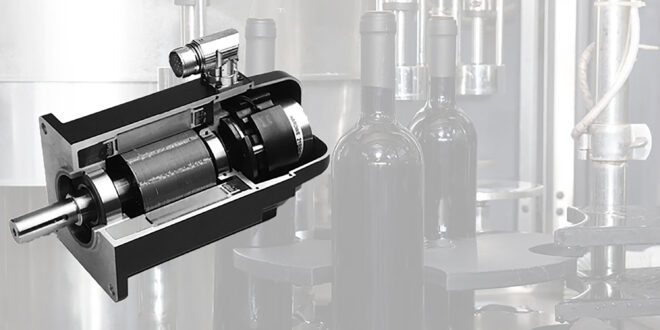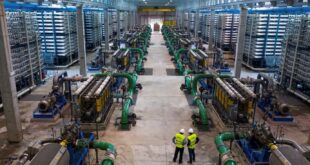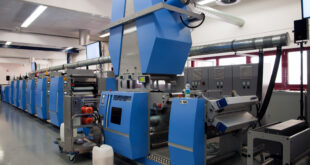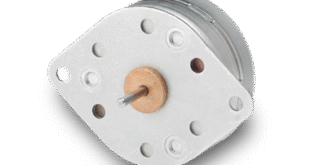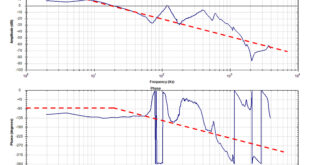Hall-effect sensors and resolvers are feedback devices that are usually integrated directly into a servo system. As lower-cost options compared to encoders, Hall-effect sensors can be used in combination with high-precision sensors. They can also provide feedback sensing in their own right for certain applications. Meanwhile, resolvers are still favoured when high resolution feedback is required in rugged environments. Gerard Bush explains the technology behind Hall-effect sensors and resolvers.
When feedback on the position or speed of a servo system is required, encoders are the typical choice for the high resolution they provide. However, sensor technology commonly integrated within a motor, rather than added to it during design, can achieve a more compact and lower cost application.
While Hall-effect sensors are typically used to manage commutation, they can provide a useful addition to incremental encoder technology. In certain applications, typically based on general torque control, Hall-effect sensors can also achieve the required feedback when used alone.
Alternatively, resolver technology can give precise feedback similar to that of an encoder. Moreover, their durable design makes them an ideal choice over optical encoder designs for applications set in rugged environments.
Hall-effect sensors
When a current-carrying conductor is exposed to a magnetic field, a voltage is generated at right angles to the current: this is the Hall effect, the basis of simple feedback technology for brushless servo systems. Hall-effect sensors are mounted inside the motor near the stator windings, with one sensor for each of the motor’s three phases.
The signals of the Hall-effect sensor provide feedback on the position of the rotor every 60º, based on six commutation states with two phases conducting at any one time. For motors with more than one pole pair, the mechanical resolution can be increased but compared to an encoder, which can sense multiple positions per degree of rotation, Hall sensor feedback is relatively coarse.
With this six-step commutation system, also known as block commutation, the current waveform is trapezoidal, advancing every 60º. Unlike sinusoidal control, with a smooth waveform based on electrical angle resolution finer than 1 degree, trapezoidal commutation delivers relatively coarse current and torque control.
Commutation and torque control
Unlike DC systems, brushless servo motors require feedback and control electronics for commutation. Unless sensorless control methods are used, a Hall-effect sensor is a simple and low-cost method of commutation. As a result, they are often integrated into frameless brushless motor kits, like the Kollmorgen KBM Series frameless motors, allowing commutation in prototyping from the outset, even if precision encoders are required at a later stage of development.
While the Hall-effect sensor is relied on for commutation, it can be combined with an incremental encoder, which then takes over control to provide fine speed and position resolution. This combination is known as the comcoder: the commutating encoder. This approach removes the start-up challenge inherent to an incremental encoder, particularly if any movement of the motor shaft is undesirable, or if the application is starting under load.
While a Hall-effect sensor’s feedback resolution and current control isn’t sufficient for purposes that demand high precision and smooth torque delivery, for applications such as power tools or general tightening requirements, where only torque delivery is sufficient, Hall-effect sensors can be used on their own.
Resolver technology
Alternatively, resolvers can achieve a level of feedback precision similar to an encoder. Also commonly integrated with the motor, a resolver is a rotary transformer, with a primary winding and two secondary windings arranged 90° apart. As the rotor turns, voltages in the secondary windings vary as a result of the shaft angle, meaning that any specific, angular position is represented by the signal pair. These signals are analogue, so control electronics or software are required to convert them into a digital position value.
A standard two-pole resolver can achieve absolute position measurement within one motor revolution, and with digital interpolation, a resolver provides resolution similar to high-count incremental encoders. While resolvers can also handle motor speeds in excess of 10,000 rpm, resolution may be limited by motor speed because of a maximum frequency ceiling.
A key advantage of resolvers is their durability. They are commonly rated at 155ºC, with special models able to withstand 230ºC, and they can even be radiation-hardened. They are also highly resistant to shock and vibration, and are less affected by EMI noise. This makes resolvers well-suited to applications such as aerospace and defence, as well as the electric vehicle market.
Specifying feedback technology
Unlike encoders, which have many various interface types, resolver designs are relatively standard, and they are often required for special purpose applications that benefit from the protection of a robust housing. As a result, resolvers are commonly integrated with a motor, rather than supplied separately.
The drawback of resolvers is that they require additional electronics for analogue-to-digital signal conversion, adding size and mass, as well as complexity of design. Moreover, while they can offer up to 16-bit resolution, the most precise encoder technology, particularly optical versions, still achieve the optimum feedback.
For assistance selecting the right feedback technology for an application, motion specialist engineers at INMOCO have extensive field experience. Although encoders are typically the standard for many applications, there’s still a role for Hall-effect sensors and resolvers, supplied by leading motion brands like Kollmorgen. Making the right specification can achieve a lower cost and more compact design, with faster development.
Gerard Bush is at engineer at INMOCO.
 Engineer News Network The ultimate online news and information resource for today’s engineer
Engineer News Network The ultimate online news and information resource for today’s engineer
